The air transport industry is not only a vital engine of global socio-economic growth, but it is also of vital importance as a catalyst for economic development. Not only does the industry create direct and indirect employment and support tourism and local businesses, but it also stimulates foreign investment and international trade.
Informed decision-making is the foundation upon which successful businesses are built. In a fast-growing industry like aviation, planners and investors require the most comprehensive, up-to-date, and reliable data. ICAO’s aviation data/statistics programme provides accurate, reliable and consistent aviation data so that States, international organizations, the aviation industry, tourism and other stakeholders can:
- make better projections;
- control costs and risks;
- improve business valuations; and
- benchmark performance.
The UN recognized ICAO as the central agency responsible for the collection, analysis, publication, standardization, improvement, and dissemination of statistics pertaining to civil aviation. Because of its status as a UN-specialized agency, ICAO remains independent from outside influences and is committed to consistently offering comprehensive and objective data. Every month ICAO produces this Air Transport Monitor, a monthly snapshot and analysis of the economic and aviation indicators.
ECONOMIC DEVELOPMENT – September 2022
World Results and Analyses for July 2022
Total Scheduled Services (Domestic and International)
![]() Passenger traffic
Passenger traffic
Revenue Passenger-Kilometres – RPK
World passenger traffic in July 2022 was -25.4% below the 2019 level, +3.8 percentage points up from the decline in the previous month. Relaxation of travel restrictions compounded by the strong travel demand led to the acceleration in traffic recovery. The main contributor to the improvement was Asia/Pacific, driven by the increase in Chinese domestic traffic. Nevertheless, recovery of the region still lags behind other regions. Overall, North America and Latin America/Caribbean were leading the recovery chart, approaching the pre-pandemic levels.
![]() International Traffic vs. Tourist Arrivals
International Traffic vs. Tourist Arrivals
International passenger numbers in July 2022 was -28.7% below the 2019 level, +6.1 percentage points up from the decline in the previous month. All regions saw an acceleration in international air travel recovery, particularly in Asia/Pacific, which recorded the strongest month-on-month increase. The recovery in international tourist arrivals followed a similar trend as international passenger traffic.
Capacity
![]() Available Seat-Kilometres – ASK
Available Seat-Kilometres – ASK
Capacity worldwide in July 2022 was -23.6% below the 2019 level, +3.9 percentage points up from the decline in the previous month (-27.5%). As air travel recovery continues, capacity offered in August is expected to improve to -21.2% down from the 2019 level.
![]() Load Factor
Load Factor
The passenger Load Factor reached 83.5% in July 2022, +1.1 percentage points higher than the previous month. With the continued improvement, the load factor in July has recovered to only -2.2 percentage points below the level seen in the same month of 2019.
Cargo Traffic
![]() Cargo (Freight) Tonne-Kilometres – CTK
Cargo (Freight) Tonne-Kilometres – CTK
World cargo traffic in July 2022 was -3.0% below the 2019 level, -3.8 percentage points down from the decline in the previous month. After a short-lived positive growth, air cargo traffic posted a decline compared to the 2019 level. Headwinds such as high inflation and rising interest rates have caused a weakening in air cargo demand. However, the ease of COVID-19 restrictions and supply chain disruption will likely support the global trade and air cargo demand in the months ahead. Performance has been a mix among regions. While North America continued to be significantly above the 2019 level, Europe remained the weakest-performing region showing the largest contraction.
Top 15 Airports (Ranked by aircraft departures, passengers, and volume of freight)
Note: Figures include total scheduled and non-scheduled services
July 2022: –9.7%, -15.3%, and +5.4% (vs. 2019) in terms of aircraft movements, passengers and freight for the Top 15
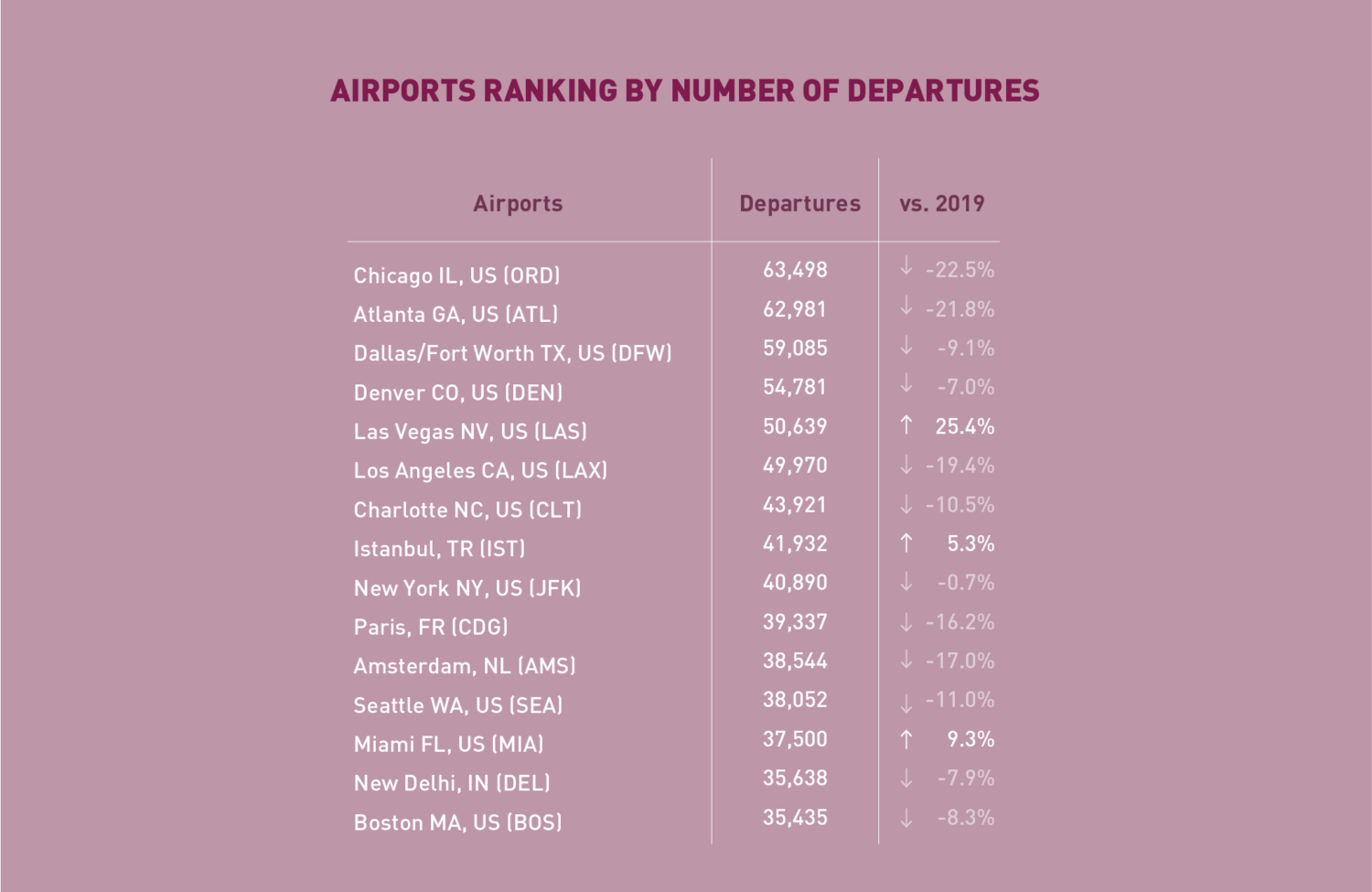
In terms of aircraft movements, the Top 15 airports reported a combined fall of -9.7% compared to 2019. Eleven out of the Top 15 airports were US airports. Chicago remained 1st, with a decline of -22.5%. For the second consecutive month, three airports posted increases, i.e., Las Vegas, Istanbul, and Miami, with the former recording a robust growth of +25.4%.
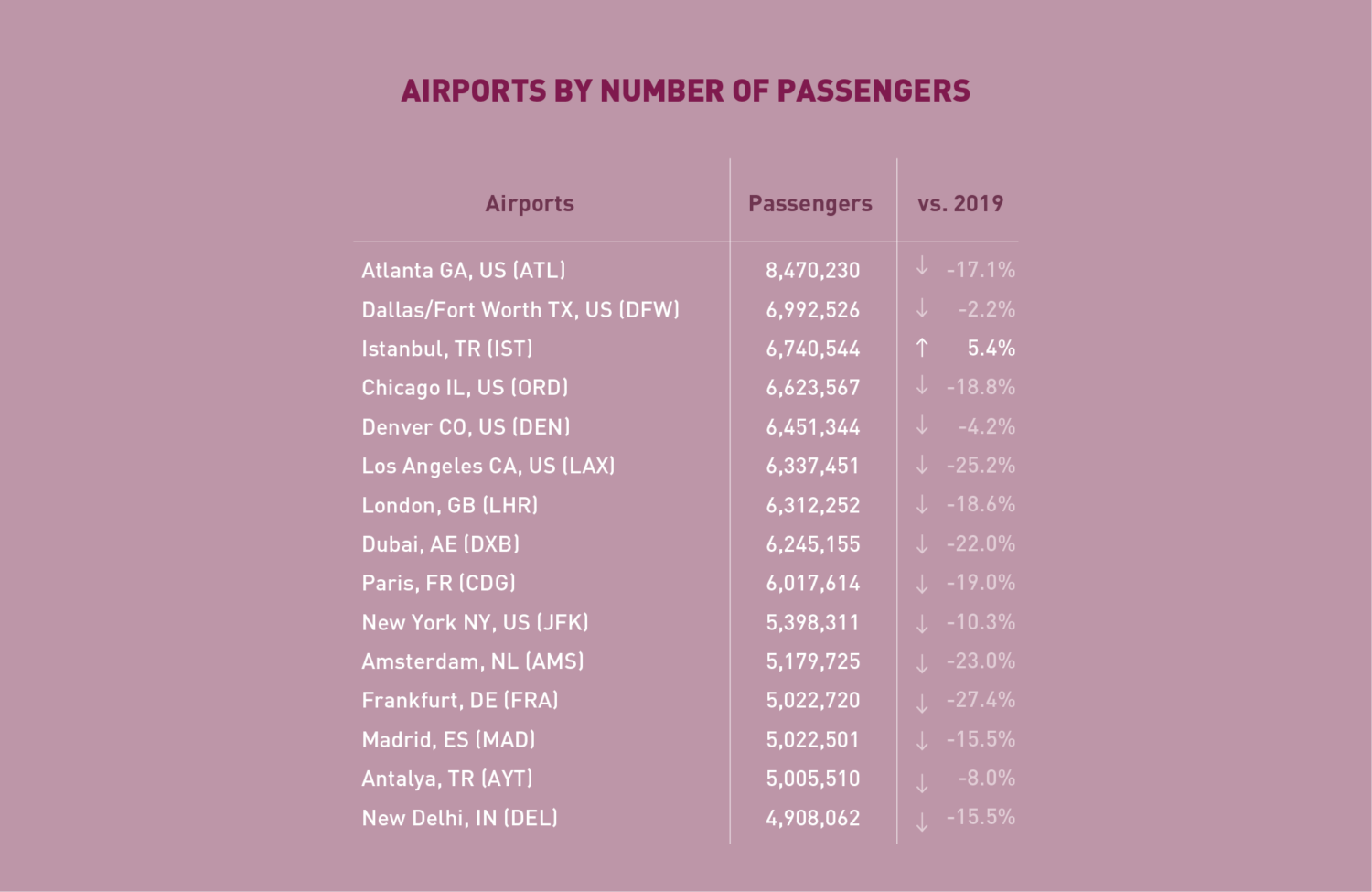
In terms of passengers, the Top 15 airports posted a total fall of -15.3%, compared to 2019. The Top 15 list was dominated by airports in the US and Europe. Atlanta remained 1st with a decline of -17.1%. Frankfurt recorded the largest contraction of -27.4%, followed by Los Angeles (-25.2%). Istanbul was the only airport within the Top 15 recording a positive growth, at 5.4%.
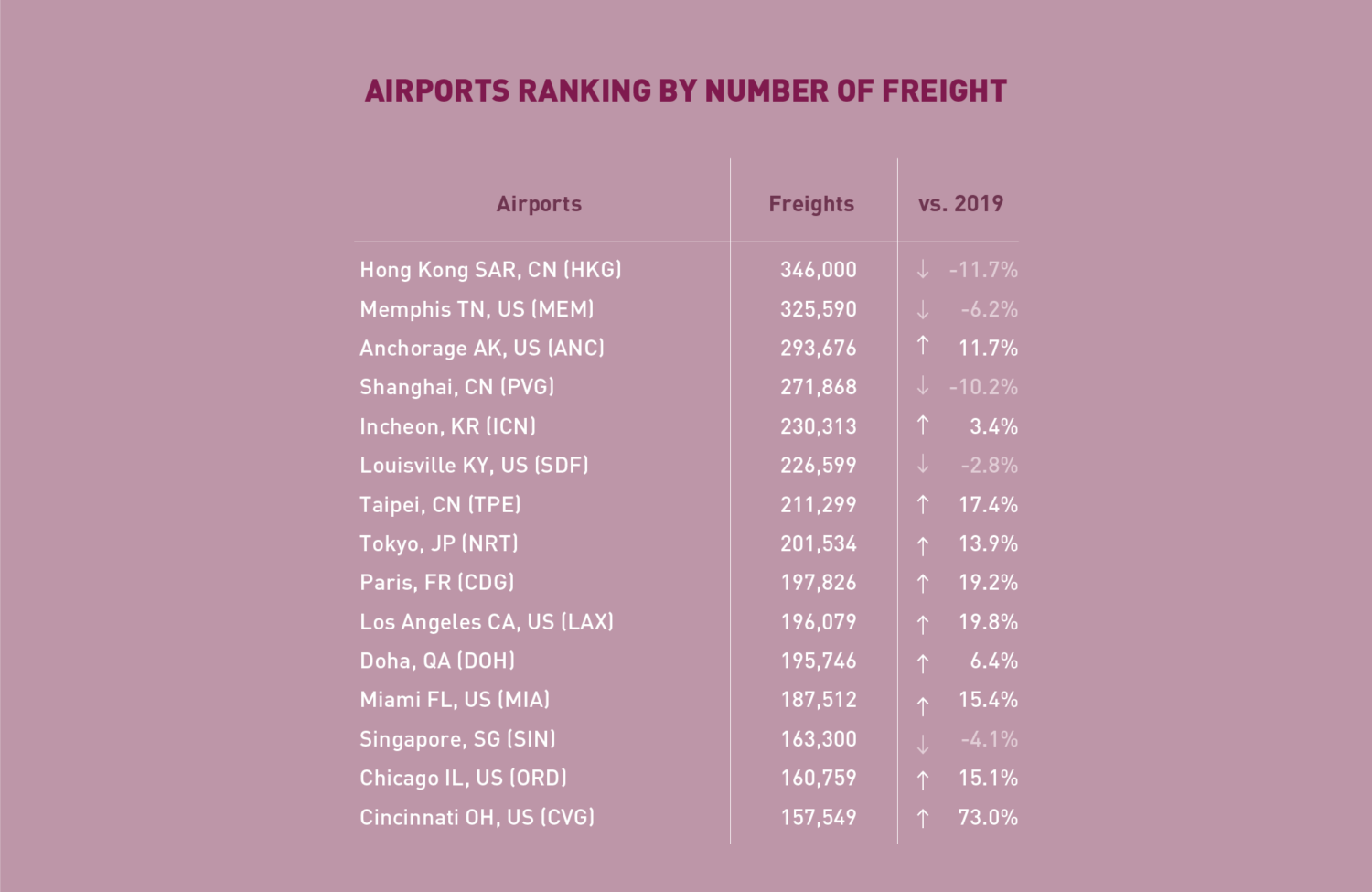
In terms of passengers, the Top 15 airports posted a total fall of -15.3%, compared to 2019. The Top 15 list was dominated by airports in the US and Europe. Atlanta remained 1st with a decline of -17.1%. Frankfurt recorded the largest contraction of -27.4%, followed by Los Angeles (-25.2%). Istanbul was the only airport within the Top 15 recording a positive growth, at 5.4%.
Top 15 Airline Groups (Ranked by RPK)
July 2022: –18.7% (vs. 2019) in terms of RPK for the Top 15
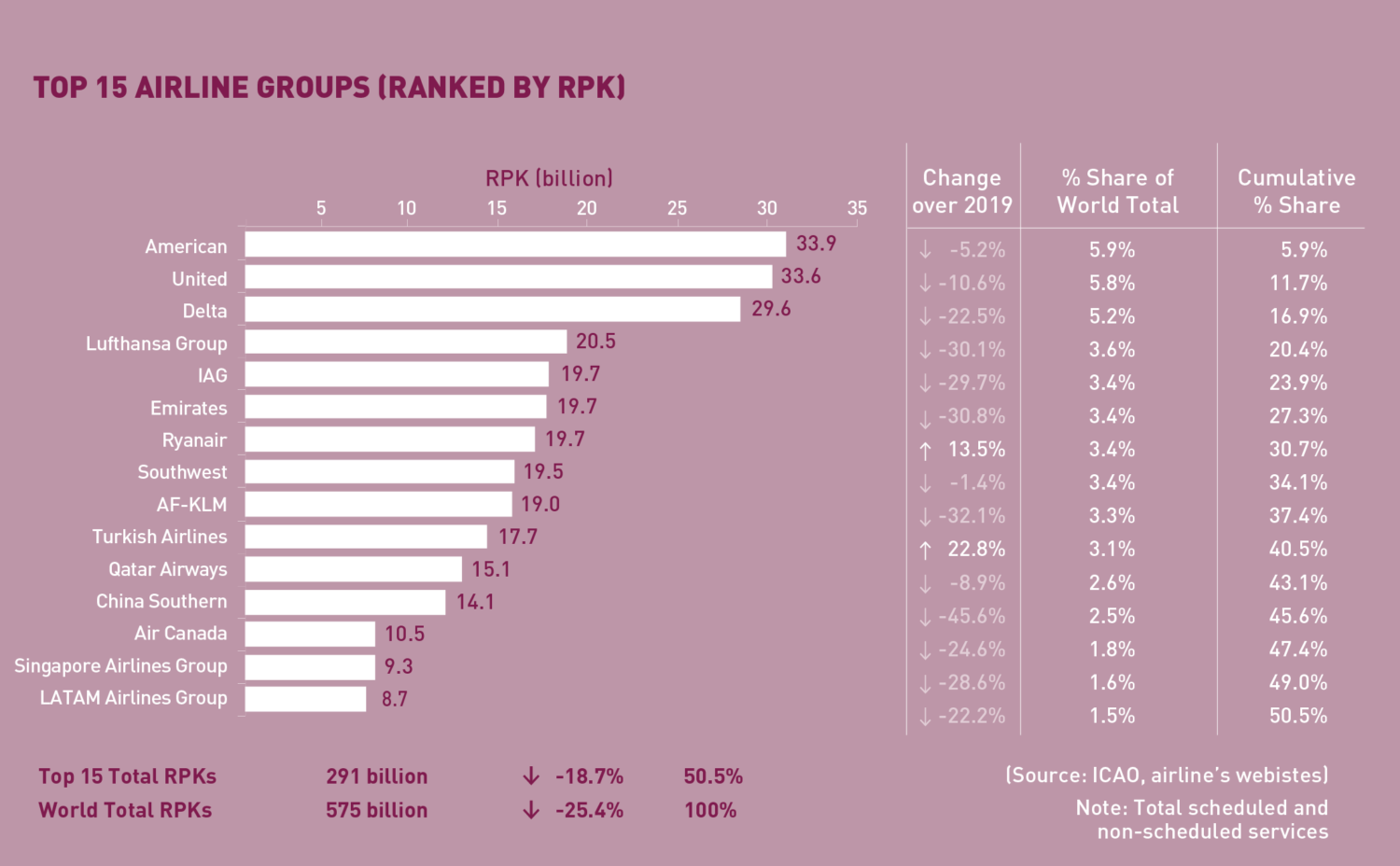
In terms of RPK, the Top 15 airline groups accounted for 50.5% of the world’s total RPK in July 2022 and declined by –18.7% compared to 2019. This decline was 6.7 percentage points smaller than the fall in the world’s average RPK.
The US airlines retained the Top 3 positions, with American at 1st and recovering faster than United and Delta, which ranked 2nd and 3rd. Southwest maintained the 8th place and recovered to close to its 2019 traffic level.
The recovery pace of airlines in Europe accelerated, supported by the surge in international travel. Lufthansa and IAG kept the same positions while AF-KLM dropped 2 places. Ryanair and Turkish Airlines were the only two airlines recording positive growth over the pre-pandemic levels.
Two Middle Eastern airlines continued to recover steadily. Emirates improved 3 positions to 6th, and Qatar remained at 11th.
China Southern retained the 12th position, however, the airline recorded the largest decline among the Top 15 group at -45.6%. Singapore Airlines maintained the 14th position with a decline of -28.6%.
LATAM re-appeared in the Top 15 list owing to a fast recovery in both domestic and international traffic.
Capacity by Region
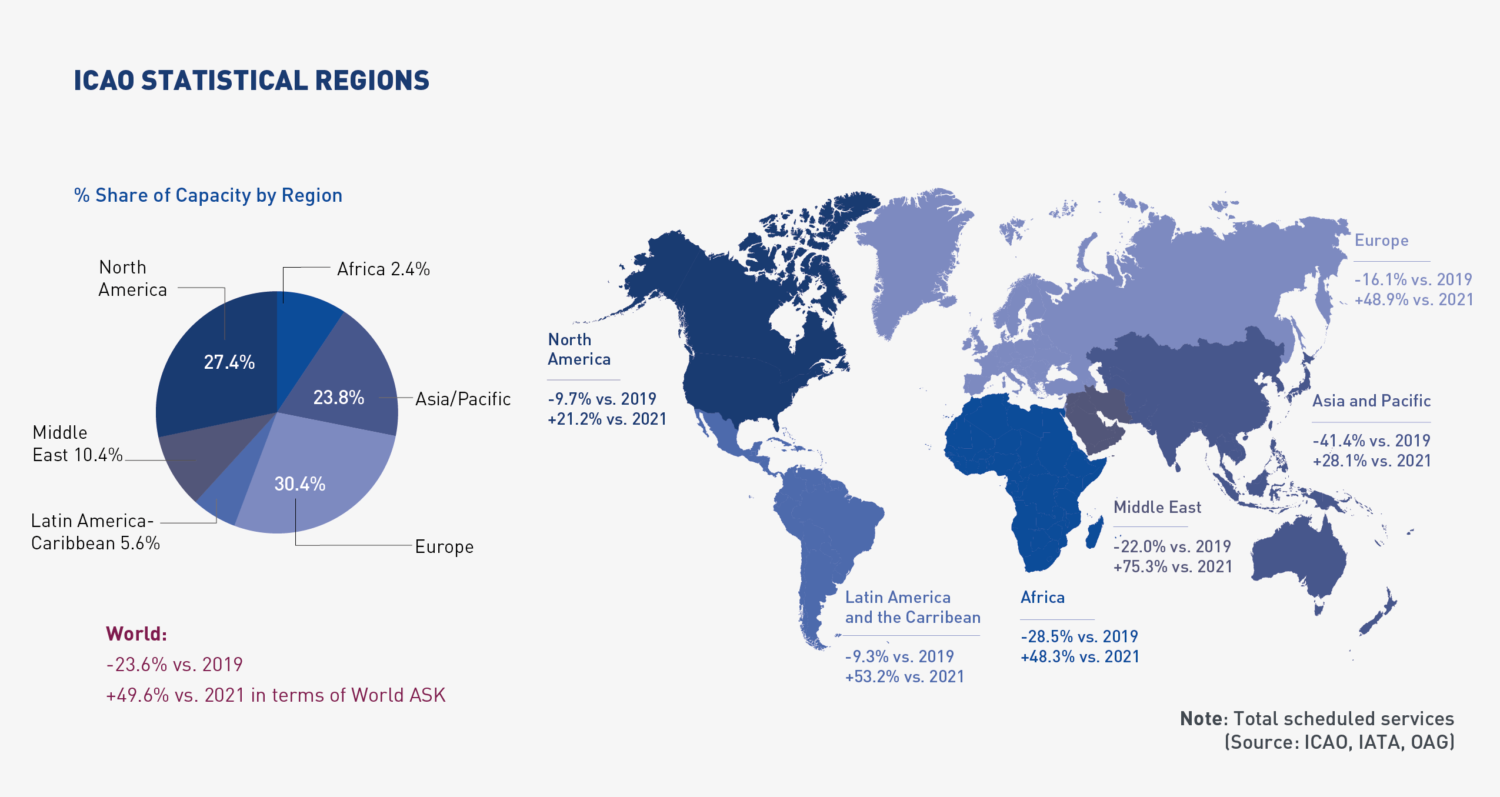
July 2022: -23.6% (vs. 2019) in terms of World ASK
Worldwide capacity contracted by -23.6% in July 2022, compared to 2019. All regions posted improvements from the previous month, with the largest increase in Asia/Pacific, in line with the traffic recovery in the region. Both North America and Latin America/Caribbean have recovered to less than 10% below their 2019 capacity levels.
Click here to download the Monthly Monitor in a PDF version.
For any queries for further information, please contact the ICAO Economic Development (ECD), Air Transport Bureau ecd@icao.int
Acronyms: ACI: Airports Council International; ASK: Available Seat-Kilometres; IATA: International Air Transport Association; FTK: Freight Tonne-Kilometres; LF: Passenger Load Factor; OAG: Official Airline Guide; RPK: Revenue Passenger-Kilometres; UNWTO: World Tourism Organization; YoY: Year-on-year; YTD: Year-to-date.

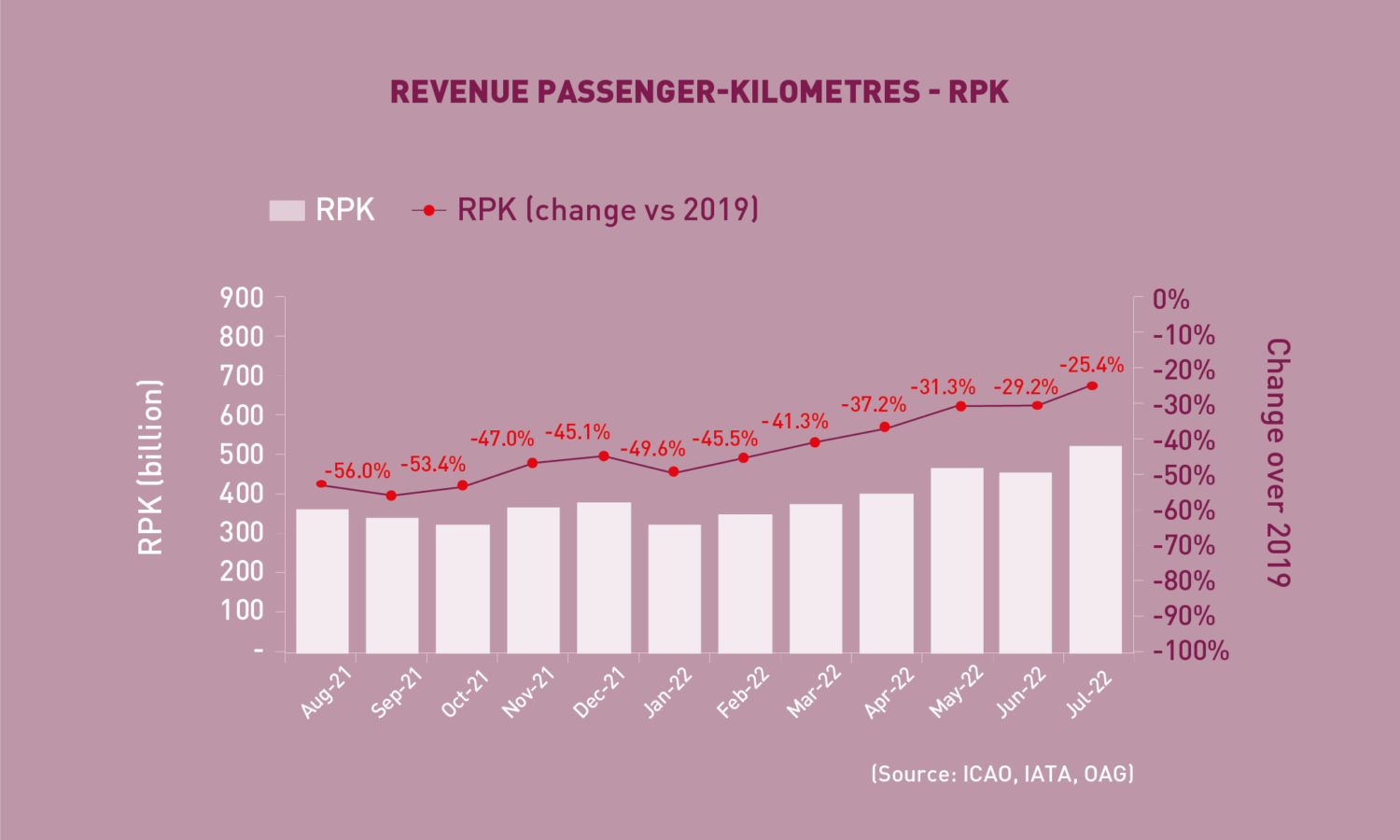 Passenger traffic
Passenger traffic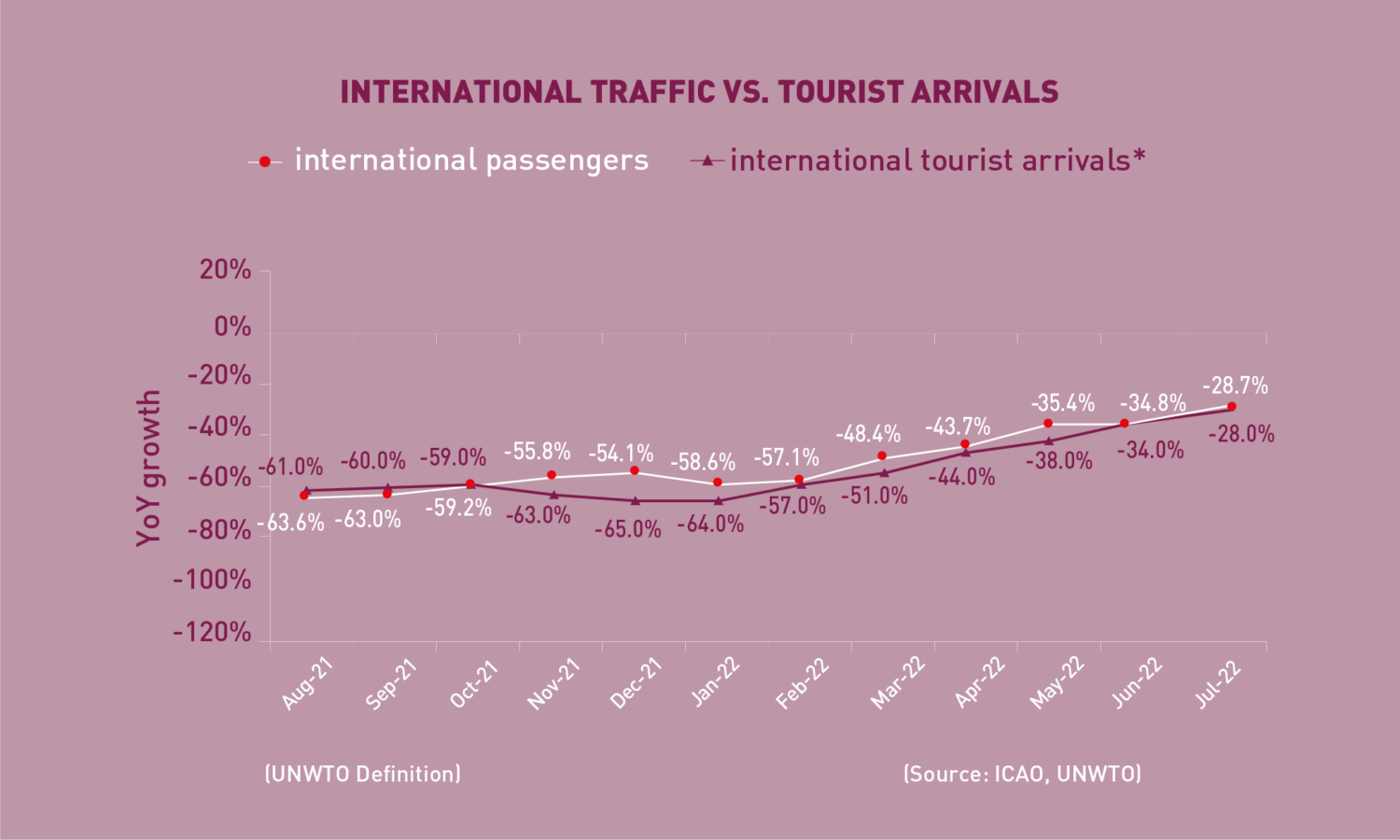 International Traffic vs. Tourist Arrivals
International Traffic vs. Tourist Arrivals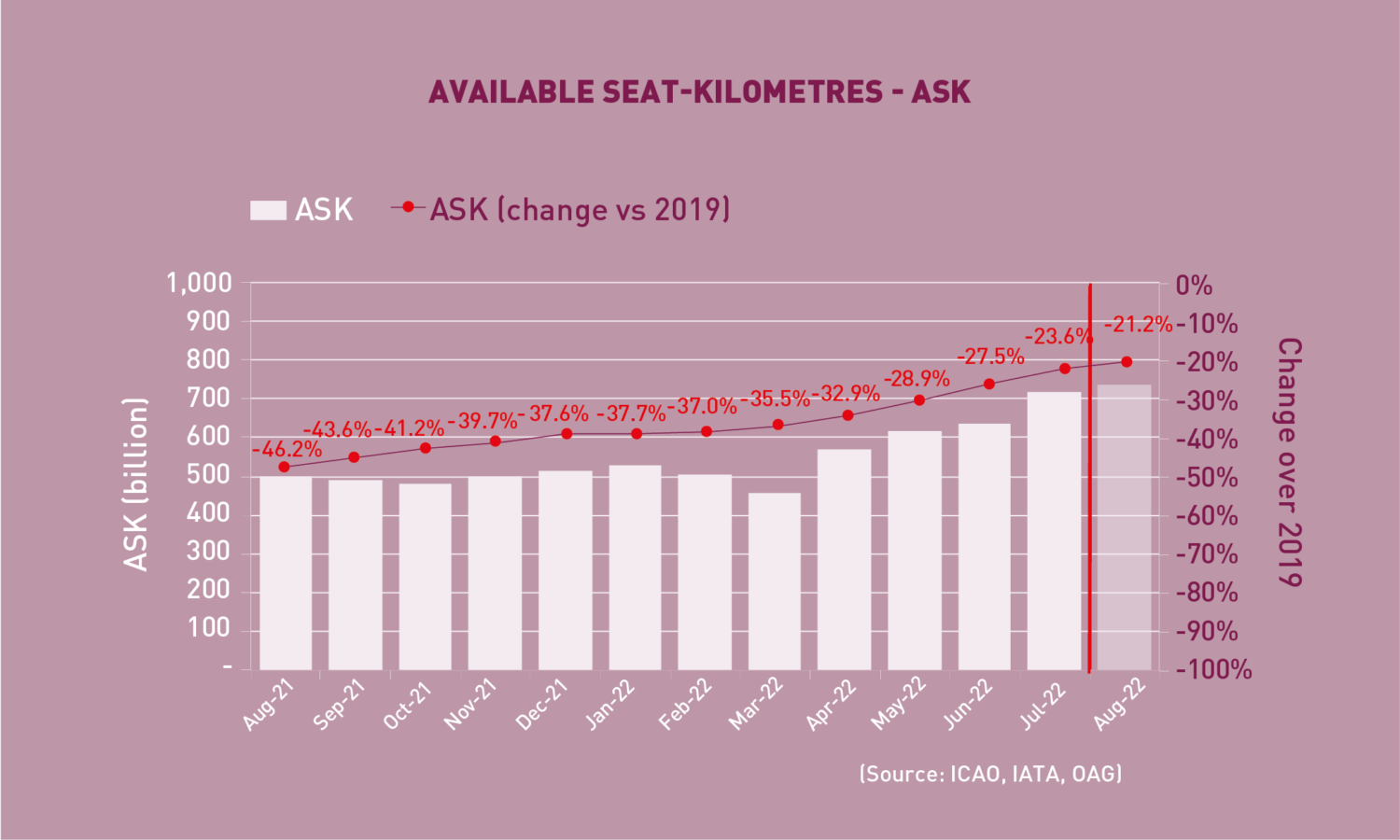 Available Seat-Kilometres – ASK
Available Seat-Kilometres – ASK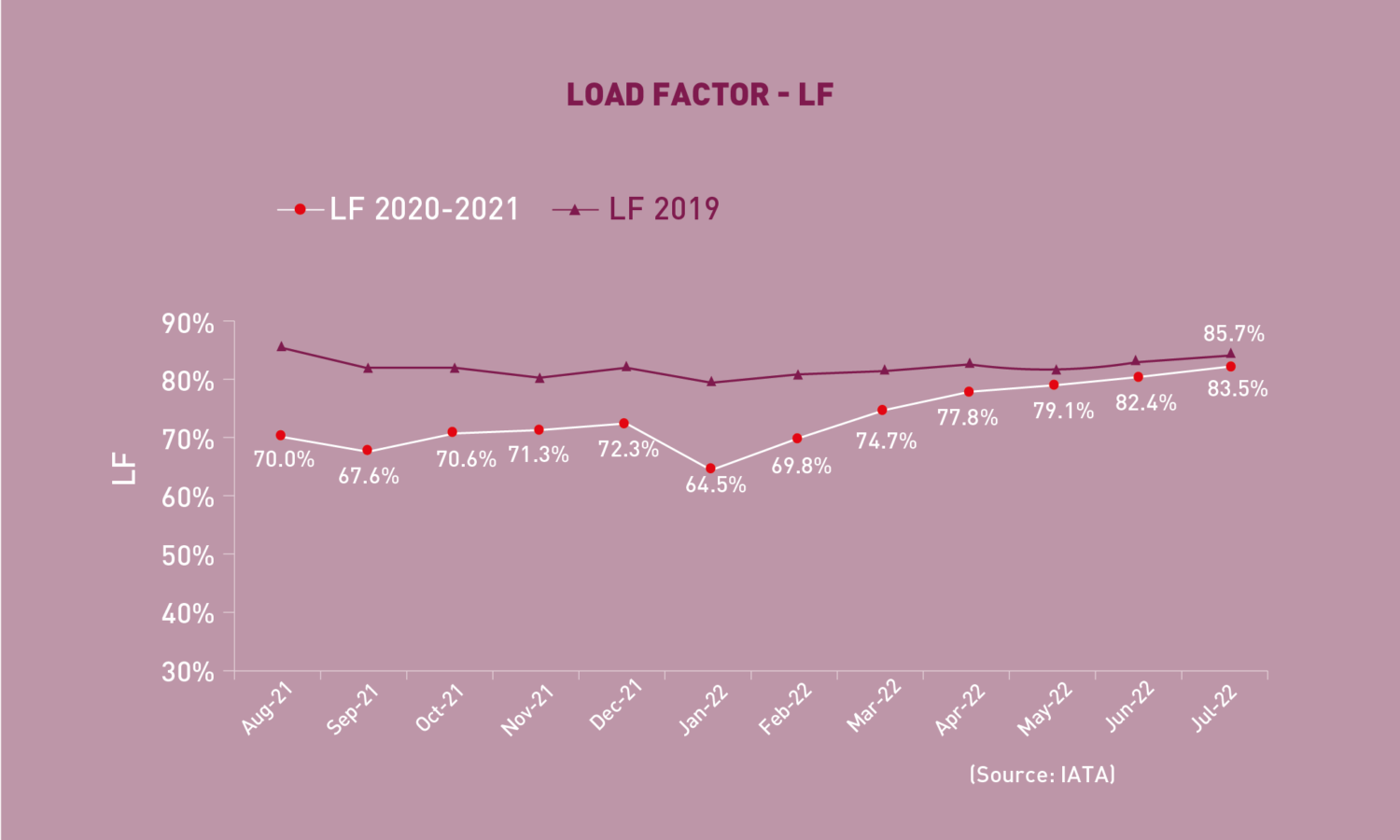 Load Factor
Load Factor 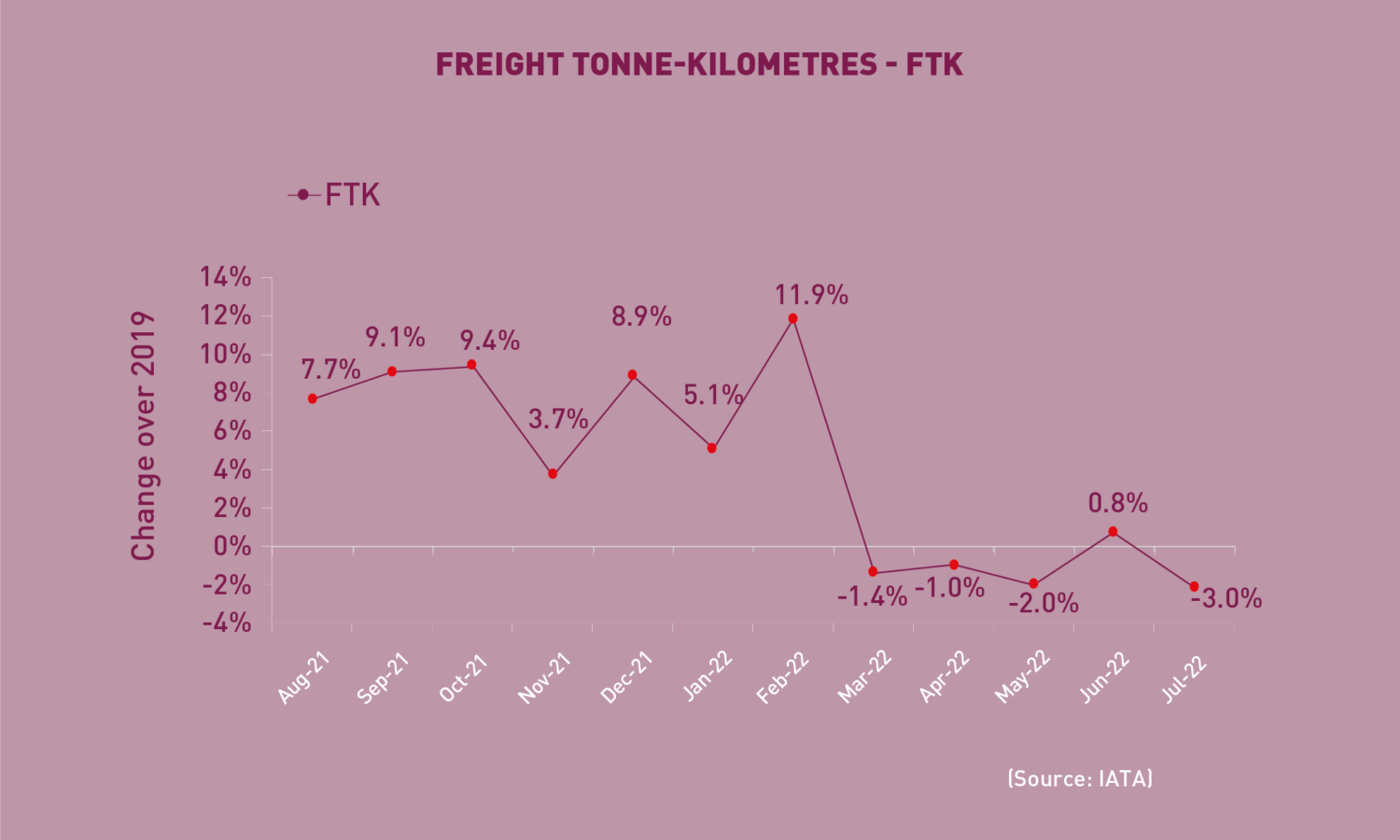 Cargo (Freight) Tonne-Kilometres – CTK
Cargo (Freight) Tonne-Kilometres – CTK